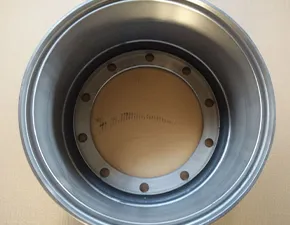
-
 Afrikaans
Afrikaans -
 Albanian
Albanian -
 Amharic
Amharic -
 Arabic
Arabic -
 Armenian
Armenian -
 Azerbaijani
Azerbaijani -
 Basque
Basque -
 Belarusian
Belarusian -
 Bengali
Bengali -
 Bosnian
Bosnian -
 Bulgarian
Bulgarian -
 Catalan
Catalan -
 Cebuano
Cebuano -
 Corsican
Corsican -
 Croatian
Croatian -
 Czech
Czech -
 Danish
Danish -
 Dutch
Dutch -
 English
English -
 Esperanto
Esperanto -
 Estonian
Estonian -
 Finnish
Finnish -
 French
French -
 Frisian
Frisian -
 Galician
Galician -
 Georgian
Georgian -
 German
German -
 Greek
Greek -
 Gujarati
Gujarati -
 Haitian Creole
Haitian Creole -
 hausa
hausa -
 hawaiian
hawaiian -
 Hebrew
Hebrew -
 Hindi
Hindi -
 Miao
Miao -
 Hungarian
Hungarian -
 Icelandic
Icelandic -
 igbo
igbo -
 Indonesian
Indonesian -
 irish
irish -
 Italian
Italian -
 Japanese
Japanese -
 Javanese
Javanese -
 Kannada
Kannada -
 kazakh
kazakh -
 Khmer
Khmer -
 Rwandese
Rwandese -
 Korean
Korean -
 Kurdish
Kurdish -
 Kyrgyz
Kyrgyz -
 Lao
Lao -
 Latin
Latin -
 Latvian
Latvian -
 Lithuanian
Lithuanian -
 Luxembourgish
Luxembourgish -
 Macedonian
Macedonian -
 Malgashi
Malgashi -
 Malay
Malay -
 Malayalam
Malayalam -
 Maltese
Maltese -
 Maori
Maori -
 Marathi
Marathi -
 Mongolian
Mongolian -
 Myanmar
Myanmar -
 Nepali
Nepali -
 Norwegian
Norwegian -
 Norwegian
Norwegian -
 Occitan
Occitan -
 Pashto
Pashto -
 Persian
Persian -
 Polish
Polish -
 Portuguese
Portuguese -
 Punjabi
Punjabi -
 Romanian
Romanian -
 Russian
Russian -
 Samoan
Samoan -
 Scottish Gaelic
Scottish Gaelic -
 Serbian
Serbian -
 Sesotho
Sesotho -
 Shona
Shona -
 Sindhi
Sindhi -
 Sinhala
Sinhala -
 Slovak
Slovak -
 Slovenian
Slovenian -
 Somali
Somali -
 Spanish
Spanish -
 Sundanese
Sundanese -
 Swahili
Swahili -
 Swedish
Swedish -
 Tagalog
Tagalog -
 Tajik
Tajik -
 Tamil
Tamil -
 Tatar
Tatar -
 Telugu
Telugu -
 Thai
Thai -
 Turkish
Turkish -
 Turkmen
Turkmen -
 Ukrainian
Ukrainian -
 Urdu
Urdu -
 Uighur
Uighur -
 Uzbek
Uzbek -
 Vietnamese
Vietnamese -
 Welsh
Welsh -
 Bantu
Bantu -
 Yiddish
Yiddish -
 Yoruba
Yoruba -
 Zulu
Zulu
Cost Analysis for Rear Brake Drums Replacement and Maintenance in Vehicles
The Cost of Rear Brake Drums An Essential Component of Vehicle Safety
When it comes to vehicle maintenance and safety, one critical component often overlooked is the brake system, especially the rear brake drums. Understanding the cost of rear brake drums is important not only for the financial planning of vehicle maintenance but also for the assurance of safety on the road. This article aims to provide insightful information about rear brake drums, their costs, and the factors that influence these costs.
What Are Rear Brake Drums?
Rear brake drums are crucial elements of a vehicle's braking system, specifically in vehicles equipped with drum brakes. Typically found in older vehicles and some modern ones, drum brakes use friction to slow down or stop the vehicle. When the driver presses the brake pedal, brake shoes expand against the inner surface of the drum, creating the friction necessary for slowing down the wheels. The efficiency of this system relies heavily on the condition and quality of the brake drums.
Factors Influencing Cost
The cost of rear brake drums can vary significantly based on several factors
1. Type of Vehicle The make and model of a vehicle significantly affect the cost of rear brake drums. For standard sedans, the price may range from $30 to $100 per drum. However, for larger vehicles such as SUVs or trucks, the costs can be higher, sometimes reaching up to $300 per drum.
2. Quality and Material Brake drums are typically made from cast iron or aluminum. Cast iron drums are more common and often less expensive, while aluminum drums tend to be lighter and may cost more. Additionally, premium brands that offer enhanced durability may charge more for their products.
rear brake drums cost

3. Labor Costs Installation is another factor that affects the overall cost of rear brake drums. Labor costs can depend on geographic location, shop reputation, and technician expertise. On average, labor charges can be anywhere from $75 to $150 per hour, and the installation of brake drums can take between 1 to 2 hours, adding to the overall expense.
4. Additional Repairs Sometimes, when brake drums are replaced, other components might also need attention, such as brake shoes, wheel cylinders, or even the drum itself. This can inflate the total cost of the brake system repair.
5. Aftermarket vs. OEM Original Equipment Manufacturer (OEM) parts tend to cost more than aftermarket alternatives. However, OEM parts are often seen as more reliable and come with manufacturer warranties, while aftermarket parts can provide a cost-effective solution.
Importance of Regular Maintenance
Understanding the costs associated with rear brake drums underscores the importance of regular vehicle maintenance. Neglecting brake maintenance can lead to more severe damage to the braking system and, consequently, higher repair costs. Regular inspections can help identify worn-out drums before they become a hazard, saving money in the long run.
Conclusion
In summary, the cost of rear brake drums is influenced by various factors including the type of vehicle, quality of the parts, labor costs, and potential additional repairs. While the initial investment might seem high, ensuring the proper functioning of brake drums is paramount for vehicle safety. Regular maintenance and timely replacement of worn-out parts can protect drivers from potentially dangerous situations and expensive repairs down the road. By prioritizing brake maintenance, vehicle owners can ensure a safer driving experience for themselves and others on the road.
-
What Are Drum BrakesNewsJul.07,2025
-
Understanding Brake Drum MaterialNewsJul.07,2025
-
Semi-Trailer Brake Drum: A Key Component for Extreme Loads and Long-Distance TransportNewsJul.07,2025
-
Drum Brake Pads for SaleNewsJul.07,2025
-
Brake Drums for SaleNewsJul.07,2025
-
Brake Drum ManufacturerNewsJul.07,2025
-
Aluminum Brake Drums: The Future of High-Performance CarsNewsJul.07,2025
